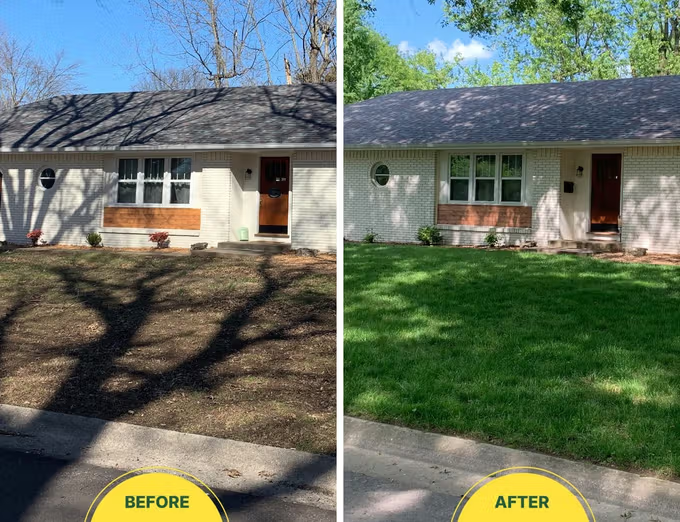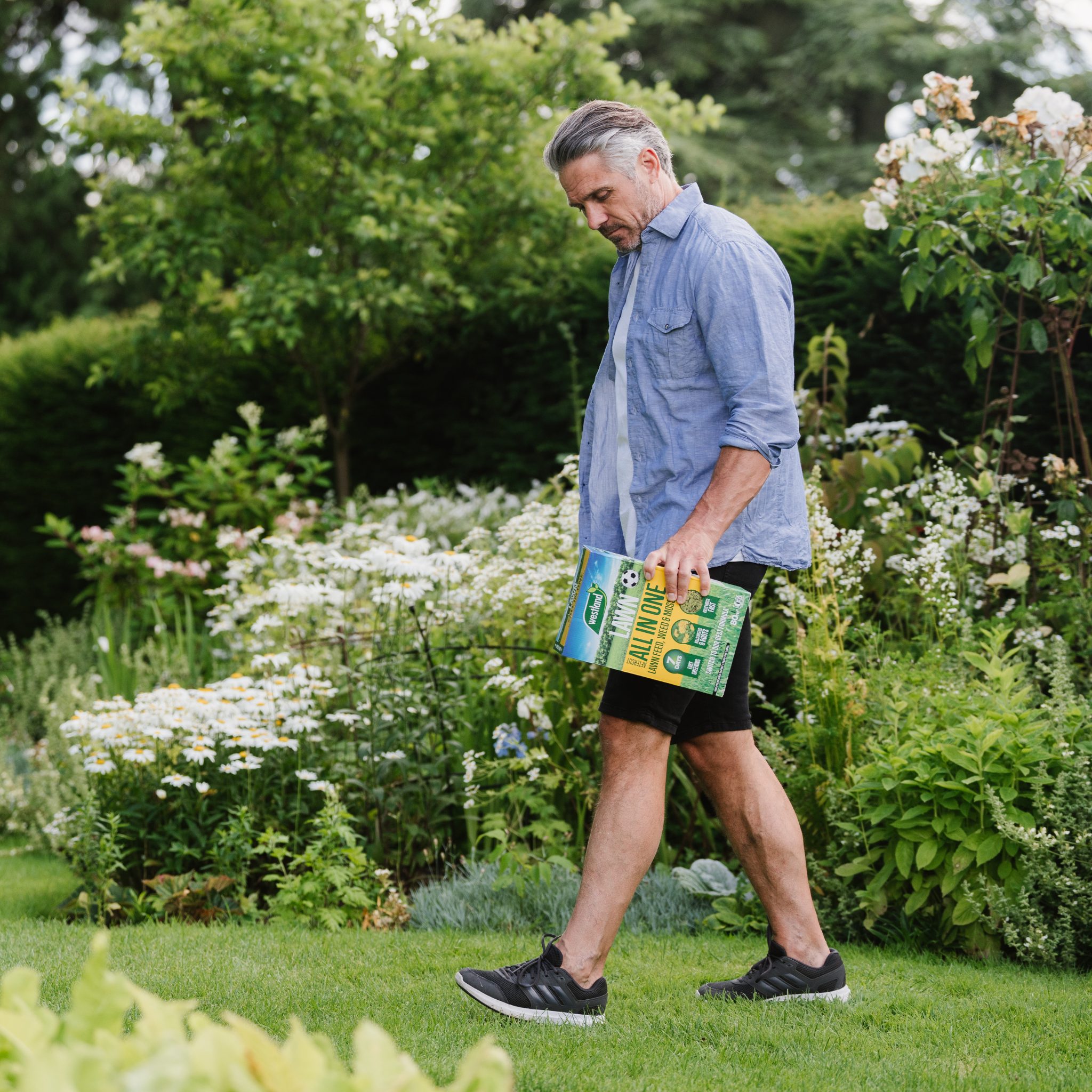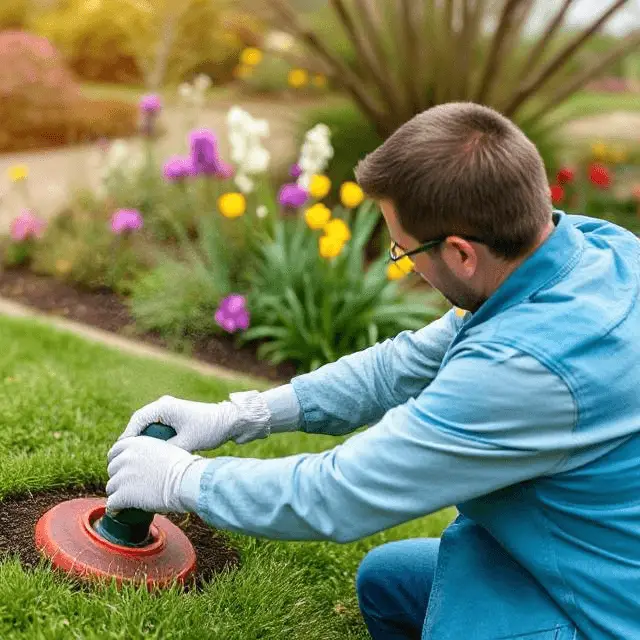Can I Hydroseed My Own Lawn?
Last Updated on November 19, 2024 by Duncan
Hydroseeding, also known as hydro mulching or hydraulic mulch seeding, involves spraying a “slurry” over the soil to promote grass growth and avoid soil erosion.
The slurry contains grass seed, water, fertilizer, mulch, and biostimulants. The fertilizer promotes grass growth, while the mulch bonds the seed to the soil and protects it from the weather elements. Mulch also decomposes and adds nutrients to the soil.
The beauty of Hydroseeding your lawn is that it takes about half as long as conventional grass seed to establish. Hydroseeded grass sprouts in 5 to 7 days and is fully established and ready to mow within a month.
Many people prefer hydroseeding for their lawns because of this speedy results. If you are wondering whether you can hydroseed your lawn, yes, you can do it. To help you out, here is how to go about it:
Gather the necessary tools and materials.
Before you begin your do-it-yourself hydroseeding job, you will need the following tools and materials:
- Soil test findings (from a home soil test kit or a lab)
- Hydroseeding equipment (hydroseeding machine, homemade hydroseeder, or hydroseeding kit)
- Hydroseeding Slurry Materials (Grass seeds, Mulch Fertilizer, Water Tackifier (optional), Green dye (optional).
- Rake
- Yard leveler
- Topsoil
- Compost
- Sulfur or lime (optional).
- Sun protection
- Garden gloves
- Closed-toed shoes
- Facial protection
Ensure that you have all of the necessary products and instruments on hand. To achieve the most outstanding results, just hydroseed bare soil. If necessary, use a sod cutter to remove the current grass before hydroseeding the new grass.
Prepare for hydroseeding
Preparing your area for hydroseeding is a critical step towards achieving the best results.
Begin by removing any pebbles, sticks, or trash from the surface area. Next, remove any existing grass and/or weeds.
Proper landscape irrigation is essential for hydroseeding performance. If you are hydroseeding during the dry season, install and test your irrigation system before hydroseeding.
If the soil in your area is compacted, gently till it to a depth of four inches or less. Top soil amendment is not usually necessary.
If you intend to amend the soil, a good way to go about it is to have a 50/50 blend mix. If you bring in topsoil, ensure that you grade the area afterward.
Use granular fertilizer (16-6-8) and then water for ten days to bring up dormant weed seeds. Next, use a weed and grass killer on freshly sprouted weeds.
Do not irrigate the target area for 24 hours after applying weed and grass pesticides. This is because this will reduce weed problems in the future.
You should wait 1-5 days after weed abatement, depending on the herbicide you use, before you apply hydroseed.
One to two days before application, grade the soil surface to ensure it is smooth and level. The surface should be loose and not compacted.
You should also allow access to hydroseeding equipment and hoses in target regions. This calls for you to remove any barriers that may impede entry to your site.
Hydroseed like a pro
Prepare the soil, mix your slurry, and then spray evenly to get a newly hydro-seeded lawn in no time.
Clear the area
As mentioned, to get the best results, you have to put your hydroseed on bare soil, thus you have to prepare the ground beforehand.
Pull up weeds and clean up any rubbish, leaves, or branches in the area. You should mow any existing grass to the least possible height.
Grade the soil
You need to rake and level your lawn with a yard leveler. If your yard has any holes or uneven patches, you’ll need to fill them in as well as level the soil you’ve added.
To guarantee that the hydroseed slurry does not reach your home or other structures that may be damaged by moisture, your grade should be 2.5 to 3 inches lower than the final grade.
Apply topsoil and compost.
You should spread 2 inches of dirt on the ground to help the seed take root. You can also add compost to provide additional nutrients.
To do this, you need to churn up the top 3 inches of topsoil to till or cultivate the existing soil. Before planting, rake the dirt to make it nice and flat.
Mix your slurry
Fill your hydroseeding machine 3/4 full with water.
Start the engine and let it run for 30 seconds before you add your materials. If the machine has a bale buster to break up the mulch, open that valve while closing the others.
If the machine does not have a bale buster, open the agitation valve and close the valve that connects to the sprayer.
Add only the mulch to the tank and keep the engine running. The agitator ensures that the slurry is adequately stirred and that the material does not settle to the bottom.
You should pour in your seed, fertilizer, and organic coloring if you’re using any.
If you have a bale buster valve, close it and then open the agitation valve.
Fill the remaining space in the tank with water.
Allow the unit to mix until all clumps are gone, which normally takes three to five minutes.
Close the agitation valve halfway, then open the sprayer hose valve.
If you’re using a home kit, simply mix it in the container it came in.
Spray the slurry
Before you begin spraying, read the manufacturer’s instructions for the unit, including any safety cautions you need to undertake. Wear sunscreen, closed-toed shoes, gardening gloves, and facial protection.
Spray your soil carefully and evenly, from one end to the other. Hold the nozzle at least 3 feet from the ground.
While walking, aim to make gradual, straight lines of seed. Overlap the lines by 2 to 3 inches to prevent gaps in your lawn.
When you’ve sprayed the majority of the slurry, the tank may start drawing air into the hose instead of your combination. If this happens, turn off the agitation valve and spray the remaining slurry until the tank is empty.
Water your lawn
Depending on the type of grass, you should keep the lawn moist for the first eight weeks after hydroseeding. Water twice or three times a day for the first two weeks, then once per day for the following six weeks.
If you have a lot of rain, lessen your watering schedule. Ensure that no one, including children and pets, walks on the grass during the first four weeks.
Depending on your grass and climate, sprouts of growth should appear within the first week or two. Mow the lawn when it seems to be established and long enough to cut (more than 3 inches tall). Expect to mow four to eight weeks after hydroseeding.
Can you spray hydroseed over the existing lawn?
Hydroseeding works best on bare soil. Spraying hydroseed slurry on established grass can kill it. If you need to fill in bare sections on your current lawn, consider overseeding.
You undertake overseeding using a power rake (which you can rent from a hardware store) and then disseminating seed. Using a leaf rake, press the seed into the loosened soil, then add your starter fertilizer and water.
What happens if it rains after hydroseeding?
After spraying the slurry, it’s wise to let the treatment dry completely before watering it. This application will withstand a moderate rainstorm. If there is heavy rain, there is a high chance of a washout.
In most situations, following an intense rain, the green mulch might appear to have washed away, but there are normally a lot of seeds underneath the ground that you can’t see, and these places will eventually fill in.
If you are expecting heavy rainfall, you should consider covering your lawn. You should note that failing to do this will undoubtedly wash hydroseed away, and you don’t want this.
When should you hydroseed?
The optimal time of year to plant grass seed, including hydroseeding, is determined by the type of grass you want to grow.
Warm-season grasses, such as Bermudagrass, should be planted in late spring to early summer.
Cool-season grasses such as Kentucky bluegrass, fescues, and ryegrasses should be seeded between late summer and early fall.
While this is the case, it is best completed in the spring or fall. You can hydroseed your lawn in the summer, but you will need to water it more frequently.
Which is better? Self-hydroseeding or hiring a professional?
While you can save money on labor by learning how to hydroseed your lawn yourself, there are certain advantages to hiring a lawn care professional instead.
Hiring a professional eliminates the need to rent or buy the hydroseeding equipment. You also don’t need to learn how to use it. And, nine times out of ten, a professional will provide better results.
So, why not sit back, relax, and let a lawn care company hydroseed your new lawn for you? Connect with experienced lawn care professionals in your region today and request for a quote.


